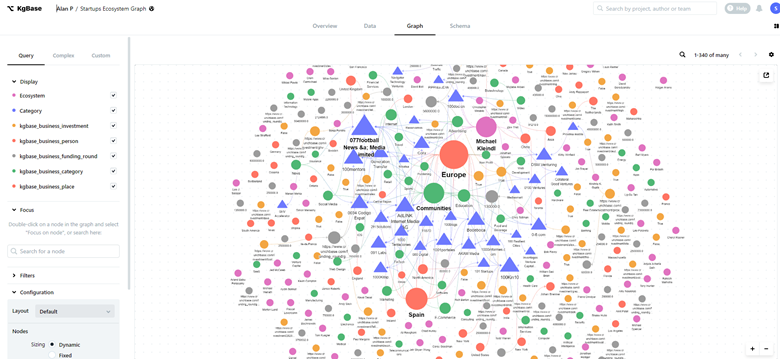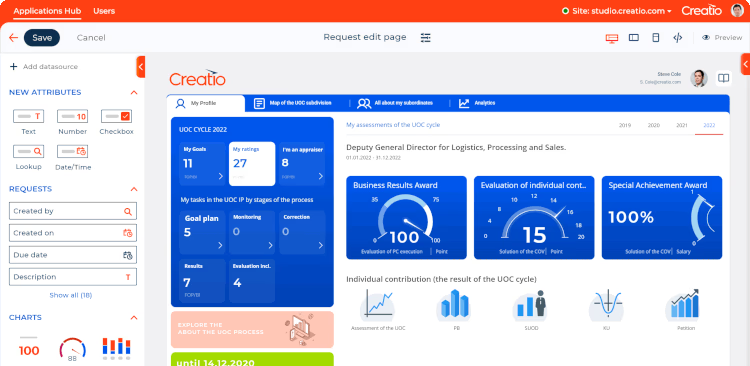Discover How Scalable Data Sources Can Be Utilized Without Coding to Enhance Your Service Procedures
In today's fast-paced organization setting, the capability to manage and assess information effectively is vital. Scalable data sources, especially when coupled with no-code remedies, supply a transformative approach that empowers non-technical individuals to enhance procedures. By utilizing devices that call for no coding knowledge, companies can boost their operational capabilities while minimizing dependancy on IT sources. Nonetheless, the actual question lies in understanding just how these solutions can be customized to particular company needs and what possible obstacles may develop in their implementation. Discovering these elements can light up the course to operational quality.
Comprehending Scalable Data Sources
Scalable databases are important for contemporary company procedures, permitting companies to successfully take care of increasing quantities of information without compromising efficiency. These data sources are made to grow and adapt to the transforming demands of a business, making sure that they can handle larger datasets and more complicated questions as business requirements evolve.
Understanding scalable data sources entails recognizing their two key kinds: upright scaling and straight scaling. Upright scaling, or "scaling up," includes adding even more power (CPU, RAM) to an existing server to boost efficiency. Alternatively, horizontal scaling, or "scaling out," requires including extra web servers to disperse the load, which often results in higher adaptability and fault tolerance.
One more critical aspect is the design of scalable databases, which can be either non-relational or relational. Relational data sources, such as MySQL and PostgreSQL, are structured and utilize SQL for queries, while non-relational data sources, like MongoDB and Cassandra, use more flexibility with unstructured information.
Ultimately, recognizing scalable databases is crucial for companies intending to utilize data as a critical asset, allowing them to continue to be affordable in an increasingly data-driven setting.

Advantages of No-Code Solutions
Unlocking the potential of no-code solutions equips services to streamline operations and boost efficiency without the demand for considerable programs understanding. These systems permit non-technical customers to develop, modify, and take care of data sources effortlessly, therefore democratizing access to innovation throughout groups.
Among the key benefits of no-code remedies is their rate of implementation. Organizations can promptly release applications and automate procedures, substantially reducing the moment invested in development cycles. This agility allows organizations to respond immediately to market modifications and consumer needs, promoting an one-upmanship.
In addition, no-code platforms reduce dependence on IT departments for day-to-day jobs, enabling technical teams to focus on more intricate jobs that call for specialized skills. This shift not only enhances source appropriation yet additionally advertises technology within the organization.
Cost-effectiveness is an additional benefit, as no-code options can reduce development and maintenance expenditures. By reducing the requirement for coding know-how, companies can harness the capabilities of their existing workforce without the overhead of working with click extra employees.
Popular No-Code Database Tools
The rise of no-code solutions has actually caused the introduction of various database tools that accommodate services seeking effectiveness and availability. These tools encourage customers with limited technical proficiency to create, take care of, and adjust databases effortlessly.

Caspio stands apart for its capability to develop internet applications without any type of coding. It permits services to produce durable data sources and deploy applications rapidly, dealing with various industry demands. Flair supplies effective data and straightforward user interfaces management capabilities, making it possible for companies to develop customized applications tailored to their operations.

Usage Instances in Business Workflow
Exactly how can organizations leverage data source tools to enhance their operations? Scalable databases supply organizations with effective capabilities to manage and evaluate information without the need for substantial coding knowledge. These devices can enhance different service processes, eventually resulting in boosted performance and efficiency.
One popular usage situation is client relationship monitoring (CRM) Services can use scalable databases to track consumer communications, choices, and responses, enabling customized interaction and much better solution. By streamlining this information, teams can team up more successfully and react to client requirements in real-time.
Another substantial application is inventory administration. Business can employ no-code database devices to keep track of supply degrees, track deliveries, website here and projection demand. This makes sure ideal inventory levels, decreases waste, and minimizes stockouts.
Furthermore, task management can take advantage of scalable data sources by permitting groups to handle tasks, due dates, and sources in a merged platform. With real-time updates and data visualization, job managers can make enlightened choices.
Obtaining Began With Implementation
Executing scalable data sources in service procedures requires a structured approach to ensure effective combination Homepage and application. The initial action is to carry out a comprehensive demands evaluation, identifying details company requirements, information types, and expected growth patterns. This foundational understanding will certainly guide the choice of the suitable database solution.
Next, pick a straightforward, no-code database platform that aligns with your operational objectives. no-code. Lots of modern-day services provide instinctive interfaces, permitting non-technical individuals to handle information efficiently. After choosing a system, establish a clear information style that details just how information will be arranged, accessed, and preserved
Training is essential; ensure that team members are outfitted with the necessary abilities to make use of the data source. Think about providing tutorials or workshops to familiarize staff with the system's performances.
Final Thought
In conclusion, the combination of scalable databases via no-code options presents considerable advantages for service procedures. Inevitably, leveraging these technologies can lead to enhanced productivity and operational efficiency, positioning organizations for sustained development in a competitive landscape.
One prominent no-code database device is Airtable, which combines the capability of a spreadsheet with the power of a data source.Just how can companies take advantage of database tools to enhance their procedures? Businesses can utilize scalable data sources to track customer interactions, choices, and responses, enabling individualized communication and much better solution.Executing scalable data sources in business procedures calls for a structured technique to guarantee successful integration and application.In verdict, the assimilation of scalable data sources through no-code services provides significant benefits for company procedures.